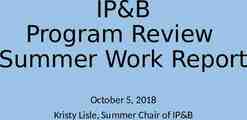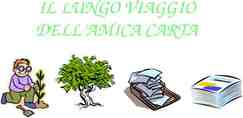GROUNDSKEEPING SAFETY Bureau of Workers’ Compensation PA Training
35 Slides975.42 KB
GROUNDSKEEPING SAFETY Bureau of Workers’ Compensation PA Training for Health & Safety (PATHS) PPT-015-03 1
Personal Protective Equipment Head Protection - Hard Hat - Baseball Cap - Straw Hat PPT-015-03 2
PPE Eye/Face Protection – Safety Glasses – Chemical Splash Goggles – Face Shield PPT-015-03 3
PPE Hearing Protection – Earplugs – Semi-aural Devices – Ear Muffs PPT-015-03 4
PPE-Respiratory Protection Respirators shall be provided when necessary protect employees from breathable hazards. “Dust Mask;” half or full face respirator. If half or full face respirator you must be medically qualified and then fit tested. No beards or excess facial hair using half/full face respirator. PPT-015-03 to if 5
PPE Hand Protection - Gloves PPT-015-03 6
PPE Body Protection - Long Sleeve Shirt - Long Pants - Coveralls - Cotton Socks PPT-015-03 7
PPE Foot Protection - Steel Toed Shoes - Sturdy Work Shoes - Toe Guards Steel-toed safety boots with oilresistant soles PPT-015-03 8
More on Foot Protection - Shoes Should be Sturdy Have Non-Slip Soles Waterproof Laces Correct Length Much better! Non-slip, sturdy, waterproof. No! No protection Is this a safe work shoe? PPT-015-03 9
Personal Protection & Safety From the Weather SUMMER: - Use sun screen (at least SPF 30). - Wear a hat to protect from sun. - Wear sunglasses (could be safety glasses*) - Drink plenty of water. - Take regular breaks. * Must meet ANSI Z87-1 requirements PPT-015-03 10
Personal Protection & Safety From the Weather WINTER: - Wear a hat - Keep ears covered & warm - Dress in layers - Wear gloves - Take regular breaks - Drink plenty of water PPT-015-03 11
Personal Protection & Safety From Bugs TICKS: - Wear light colored clothes. - Wear long sleeve shirts. - Tuck pants into socks or boots. - Wear high boots. - Wear a hat. - Use tick repellant (but not on face). PPT-015-03 12
Personal Protection & Safety From Bugs STINGING INSECTS: - Be aware of where you are working. - Wear long sleeves. - Wear high boots. - Use insect spray. - Don’t jump around or swat at them. - If allergic, have “kit” with you. PPT-015-03 13
Personal Protection & Safety From Poisonous Plants POISON IVY/SUMAC: - Be aware of where you are working. - Wear long sleeves. - Wear high boots. - Wear gloves. - Remove gloves before touching eyes/skin. - Wash clothes worn separately. PPT-015-03 14
Equipment Safety Tractors, Riding/Push Mowers/Golf Carts: - Inspect roll over protection (ROPS). - Wear safety belts (if applicable). - Get on/off safely, not quickly. - Practice “slope safety.” - Never leave unattended while running. - Drive slowly and follow traffic rules. PPT-015-03 15
Lawn Mowing Safety Walk around area before mowing to look for objects in grass that could be projectiles. Don’t mow when raining, lightning, or grass is slippery. Start and refuel mowers outdoors; don’t refuel when engine is hot. When mowing slope: across with push mower, up & down with riding mower. Always wear appropriate PPE. When cleaning mower blades always disconnect spark plug. PPT-015-03 16
Snow Blower Safety Make sure all people and pets are out of the way before you begin. Wear appropriate PPE. Do not put your hand into the snow blower to remove impacted snow or debris; turn machine off, wait a few seconds, use broom handle or stick. Clear snow up and down the face of slopes, not across. Do not leave blower unattended while it’s running. Fill unit with fuel before starting and let cool down before refueling. PPT-015-03 17
Golf Cart Safety Operate at safe speed (equivalent to a fast paced walk). Ensure all occupants keep arms, legs, feet, and hands inside cart. Give pedestrians the right of way. Obey traffic signaling devices. Engage parking brake when cart not in use. PPT-015-03 18
Golf Cart Safety Check tire inflation before operation. Check brakes before moving too far. Check for possible battery leaks. Never leave keys in unattended cart. Carry only recommended # of passengers. How many people should ride in this cart? No more than two. PPT-015-03 19
Golf Cart Safety BATTERY CHARGING Wear Safety Goggles and appropriate hand protection at all times. Do not recharge the battery near an open flame or source of ignition. Do not smoke near the recharge station. Only an approved battery charger should be used (e.g. those designed to shut off automatically when the batteries are fully charged). PPT-015-03 20
Golf Cart Safety BATTERY CHARGING (Continued) Pour baking soda on all spilled battery acid before cleaning up the spill. Wash skin thoroughly with cold water if you make contact with battery acid. Disconnect all battery charger cords before using the golf cart. PPT-015-03 21
Tool Safety Hand Tools: - Inspect to ensure in safe condition. - Ensure cutting tools are sharpened. - Wear appropriate PPE. - Carry safely. Is this tool safe to use? NO! Handle tapered & taped; should be replaced. PPT-015-03 22
Tool Safety Power Tools: - Inspect power cords. - Inspect tools regularly. - Keep chain saws sharpened. - Do not disable safety guards. - Keep feet/hands away from cutting edge. - Size equipment to operator. - Always use with GFCI. PPT-015-03 23
WARNING – DANGER !!! ONLY USE TOOLS AND EQUIPMENT YOU HAVE BEEN TRAINED TO OPERATE!!!! NEVER ATTEMPT TO USE ANY EQUIPMENT UNLESS YOU HAVE BEEN GIVEN PROPER TRAINING! PPT-015-03 24
Hazardous Materials Know the hazards of materials you work with. Check all container labels. Check with your Supervisor about appropriate PPE. Clean equipment and clothing properly. Know the location of emergency eyewash/showers. PPT-015-03 25
Tips for Safe Lifting Plan the Lift. Remove anything in your way. Pushing is easier than pulling. Pulling is easier than carrying. Get help for heavy/bulky loads. PPT-015-03 26
Tips for Safe Lifting Warm up your muscles with stretches. Test the weight of the load first. Face the way you need to move. Hold the load close to your body. PPT-015-03 27
Tips for Safe Lifting Plan where to set the load down. Rest more often when it is hot/humid. Take more time to warm up your muscles the cold. in Take more breaks if using tools/equipment that vibrates. PPT-015-03 28
Shoveling Snow Safely Stretch/exercise “lightly” before beginning. Push snow instead of lifting it (where possible). Walk to where you want to dump the snow, don’t throw it. Don’t throw snow over your shoulder or to the side (causes you to twist). Pace yourself; take breaks if tired or out of breath. Drink plenty of water; avoid caffeine/nicotine before beginning. PPT-015-03 29
Snow Clearing Safety If using a power broom wear safety glasses & remember brush is shooting stones, twigs etc. – do not use if people nearby! Wear gloves when spreading salt by hand. Remember salt can cause snow/ice to refreeze. When driving snow removal truck/vehicle always use mirrors when backing up. Wear appropriate footwear and take smaller steps when walking on snow/ice. PPT-015-03 30
Vehicle Safety Inspect vehicles at least weekly to ensure they’re in safe operating condition (e.g. tires safe, lights and brakes working, etc.). Before operating vehicle ensure horn, lights, and turn signals are working. When backing a vehicle: always sound horn three times, use side mirrors, back up slowly. Always observe posted speed limits. Always give pedestrians the right of way. PPT-015-03 31
Before You Begin a Task YOUR SAFETY CHECKLIST: Assignment understood. Have proper PPE. Have proper tools. Tools & PPE inspected & safe. Equipment in safe condition. Hazardous materials labeled. Work area inspected for hazards. PPT-015-03 32
Remember YOU NEED TO TAKE RESPONSIBILITY FOR YOUR OWN SAFETY! DON’T “SHORT CHANGE” YOURSELF! PPT-015-03 33
Contact Information Health & Safety Training Specialists 1171 South Cameron Street, Room 324 Harrisburg, PA 17104-2501 (717) 772-1635 [email protected] Like us on Facebook! https://www.facebook.com/BWCPATHS PPT-015-03 34
Questions PPT-015-03 35








































